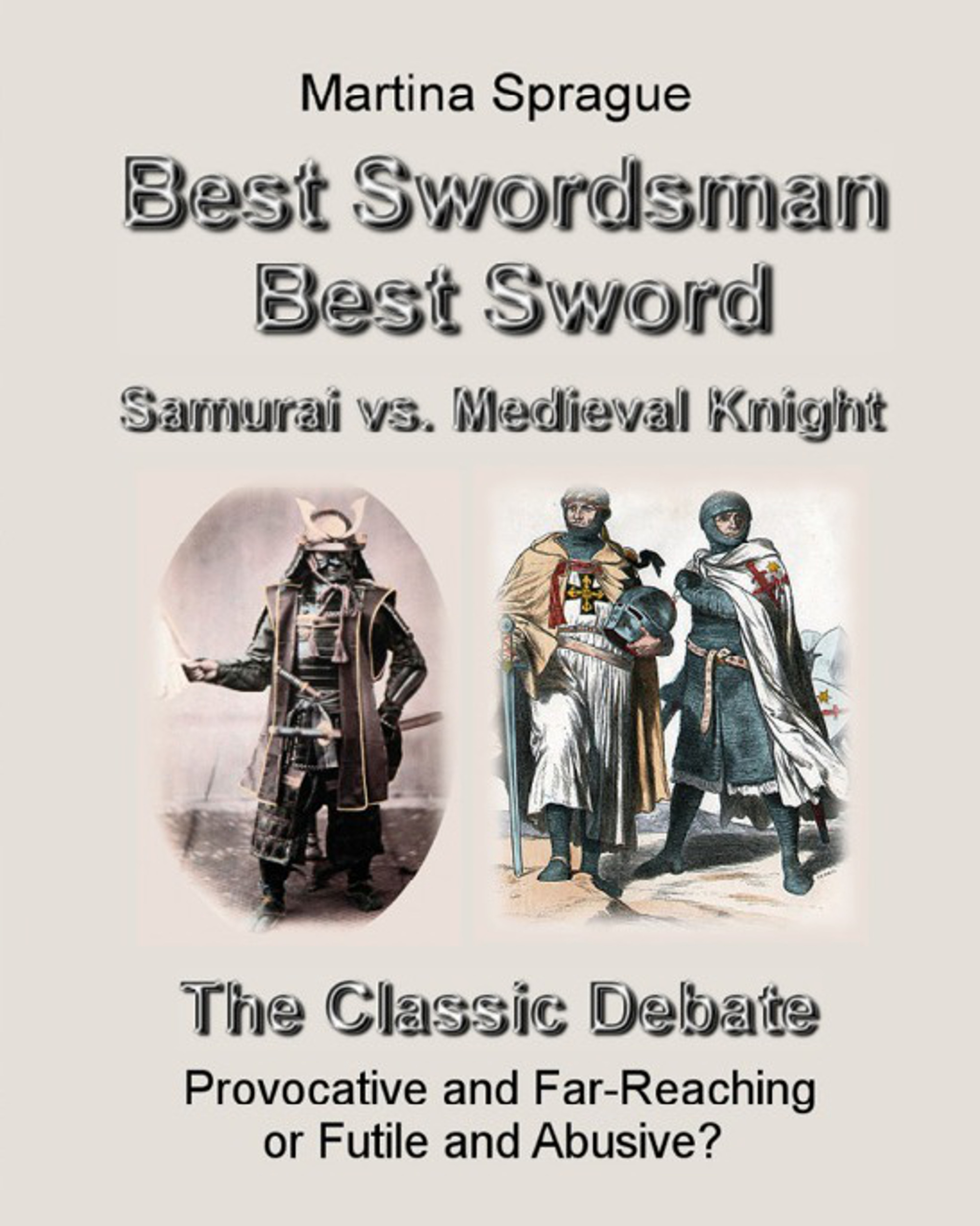 fax (000) 000-0000
fax (000) 000-0000
toll-free (000) 000-0000
Best Swordsman, Best Sword: Samurai vs. Medieval Knight
Swords and swordsmen fascinate us, but why?
When we hear the word samurai, what first comes to mind is probably
the katana, or slightly
curved razor sharp Japanese sword. But when we hear the word knight,
what first comes to mind is probably not the European medieval
longsword. We might think instead of heavily armored men on horses,
or images of the Crusades might flash before our eyes. The Japanese
samurai and European medieval knight tend to evoke portrayals of an
honorable code of ethics or chivalric behavior. But this book is not
about honor and ethics, chivalry and character; nor is it about
self-actualization, all of which are qualities commonly attributed
to the swordsmen of Japan and Europe, but that have likely been
exaggerated through folklore and modern media. This book is about
the brutality of the battlefield where men clashed in single combat
with cold steel for the sole purpose of executing a killing blow
against their opponent.
Much has been said and written about the Japanese
katana and perhaps even more about the European medieval longsword,
not the least in the surviving original historical treatises.
Attempts to compare the katana and longsword, or the samurai and
knight, are also not totally foreign to us who study the combat
arts. As we ponder the question, we have
probably come to the conclusion that individual
skill, rather than sword type or culture, stands behind the
claimants to the title, Best Swordsman. But the answer is a bit more
complex. Since the sword was designed primarily for close combat
range between individual swordsmen fighting under very specific
circumstances, many factors come into
play when trying to determine whether the samurai or medieval knight
would prove more effective in sword battle.
In order to get the
most out of a mentally challenging historical exercise, such as the
one presented here, it helps to be aware of the different ways we
approach historical sources, their limitations, and the biases that
affect us.
Historical sources bolster archaeological evidence, and vice versa,
and the historian can cast new light on old facts and
bring perspective to primary and secondary source materials.
But since medieval sword battles took place hundreds of years ago
and none of us was present to witness sword battle to the death, and
since samurai and medieval knights never met on the battlefield,
historians can obviously not provide live evidence of how such
fights went down. Whatever statements we make and conclusions we
draw are therefore only best attempts at interpreting the variety of
source materials that exists, including artifacts, written accounts,
and even personal attempts at recreating historical battles. Because
of discrepancies in the historical record and the natural emergence
of various biases, historians often disagree on how events
transpired.
As we ponder the material in this book, remember
that history is a living entity.
Any historical account can potentially bring us
something unique. But unlike science, it does not follow precise
rules and there is often no single correct answer.
How we approach history is determined by our
respective backgrounds, cultures, goals, desires, and passions.
